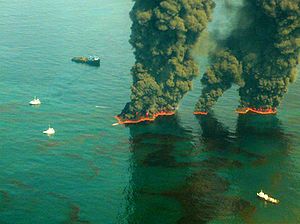- Image via Wikipedia
The state mounted a PR blitz to show beachgoers that Florida’s surf had been spared an oily disaster. Presidential visits aside, it seems social media helped save summer tourism on the Gulf of Mexico
The BP (BP) Deepwater Horizon spill happened in the middle of nowhere in the Gulf of Mexico, but it also took place, as every event of global import now does, in the realm of social media. The company and the government learned — again — the hard lesson that controlling the information and imagery from the spill is nearly impossible in today’s climate. That meant the tourism industry around the gulf faced a big problem — the images, without context, had linked the entire region to the unprecedented number of images of slicks, oil-soaked wildlife and constant footage of the Macondo well gushing millions of gallons of crude, even though parts of the gulf were spotlessly clean.
“When you think gulf tourism, you typically think Florida,” says Will Seccombe, chief marketing officer for Visit Florida, the state’s tourism division. Tourism is crucial to the state — Florida pulls in about $20 billion in visitor spending annually out of the $34 billion gulf tourism industry. To survive, Florida had to separate itself from the rest of the gulf in the minds of travelers.
Continues at: Florida tourism saved by social media. Really. – Fortune Tech.
Related articles by Zemanta
- Florida says visitors up despite Gulf oil spill (reuters.com)













